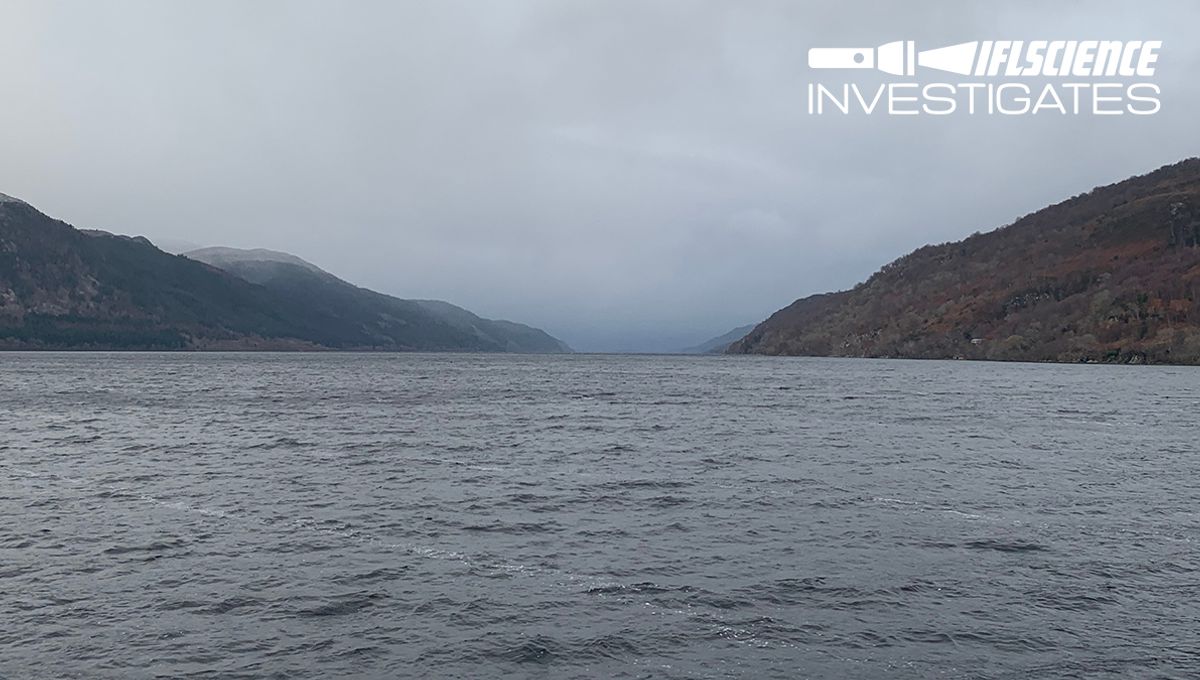
Start talking about the Loch Ness monster and you’ll be met with all manner of ideas about what it could be. From plesiosaur to giant eels and even floating logs, the Loch Ness monster has captured imaginations from the small Scottish village of Drumnadrochit across the globe. But what could Nessie actually be?
A case of mistaken identity?
The Official Loch Ness Monster Sightings Register has recorded, at the time of writing, just three “sightings” this year and a total of 1,163 to date. The most recent entry shows an unusual wave pattern recorded by a local on the surface of the loch.
The second sighting saw a couple spot something “long and thin” in the wake of a boat, while the first sighting of the year describes something “large and alive and swimming in the water – it was what I can only describe as a ‘hump’ (as people often say) kind of like if a large seal or walrus was swimming in the water but for some reason it’s head was hidden, like just it’s back was exposed.” Could these people be mistaking real animals for Nessie, or are they seeing something else entirely?
The main things that strike you about Loch Ness from an ecological point of view are that it is very long, very deep, and pretty cold. “The average water temperature in Loch Ness in winter reaches 4.7°C [40.7°F], in spring 7.4°C [45.3°F], in summer the average temperature rises to 14.5°C [58.1°F], and in autumn it is 10.1°C [50.2°F],” explains Sea Temperature Info.
These deep, cold waters house all manner of known species, including European eels, Arctic char, sea trout, brown trout, and even salmon. Otters, deer, and highland cows also use the loch, as well as a wide range of bird species, including ospreys and even golden eagles. However, the water is likely too cold to support a long-forgotten marine reptile like a plesiosaur, even if their long necks fit the images of Nessie we’ve come to expect.
An investigation from the University of Otago in 2019 found that Loch Ness contained lots of eel DNA but nothing that could resemble a living Jurassic reptile like a plesiosaur. The study also did not find any shark, catfish, or sturgeon DNA, all previously considered as candidates for possible Nessie sightings. This rules out something like a Greenland shark, which would have a plausible 300-year or more lifespan and could survive for a long time, but not in the freshwater of Loch Ness.
“There is a very significant amount of eel DNA. Eels are very plentiful in Loch Ness, with eel DNA found at pretty much every location sampled – there are a lot of them. So – are they giant eels? Well, our data doesn’t reveal their size, but the sheer quantity of the material says that we can’t discount the possibility that there may be giant eels in Loch Ness. Therefore we can’t discount the possibility that what people see and believe is the Loch Ness Monster might be a giant eel,” Professor Neil Gemmell, from the University of Otago, said in a statement at the time.
The loch is, at its deepest, 227 meters (744 feet) deep, with some suggestion that it could be even deeper. It stretches for 36 kilometers (23 miles). Through the River Ness, it is possible to reach the coast, and the occasional seal has been known to swim up the stream and end up in the freshwaters of the loch. These smooth creatures could give rise to “hump” sightings, but are pretty infrequent visitors.
Weird waves
Explanations for unusual wave patterns come in two parts. First, boat wakes can easily fool the eye into thinking there’s more movement under the surface. The second, however, is a phenomenon known as seiches. These are wave movements caused by changes in atmospheric pressure and strong winds that cause water to move from one end of a body of water to another. When the wind dies down, the water rebounds back in the other direction. Seiches can occur in closed bodies of water like Loch Ness.
Loch Ness was formed by glaciers in the most recent Ice Age, more than 10,000 years ago. These carved a deep valley called Great Glen, which is so large it can be seen from space. The Great Glen is also home to the Great Glen Fault, which predates it by a considerable amount, thought to have formed 300-400 million years ago.
The geological formation of Loch Ness could have trapped a number of species within the loch, but the likelihood of an ancient marine monster or reptile population surviving in there for all that time is incredibly slim.
Source Link: What's Really Lurking In The Deep Dark Waters Of Loch Ness?